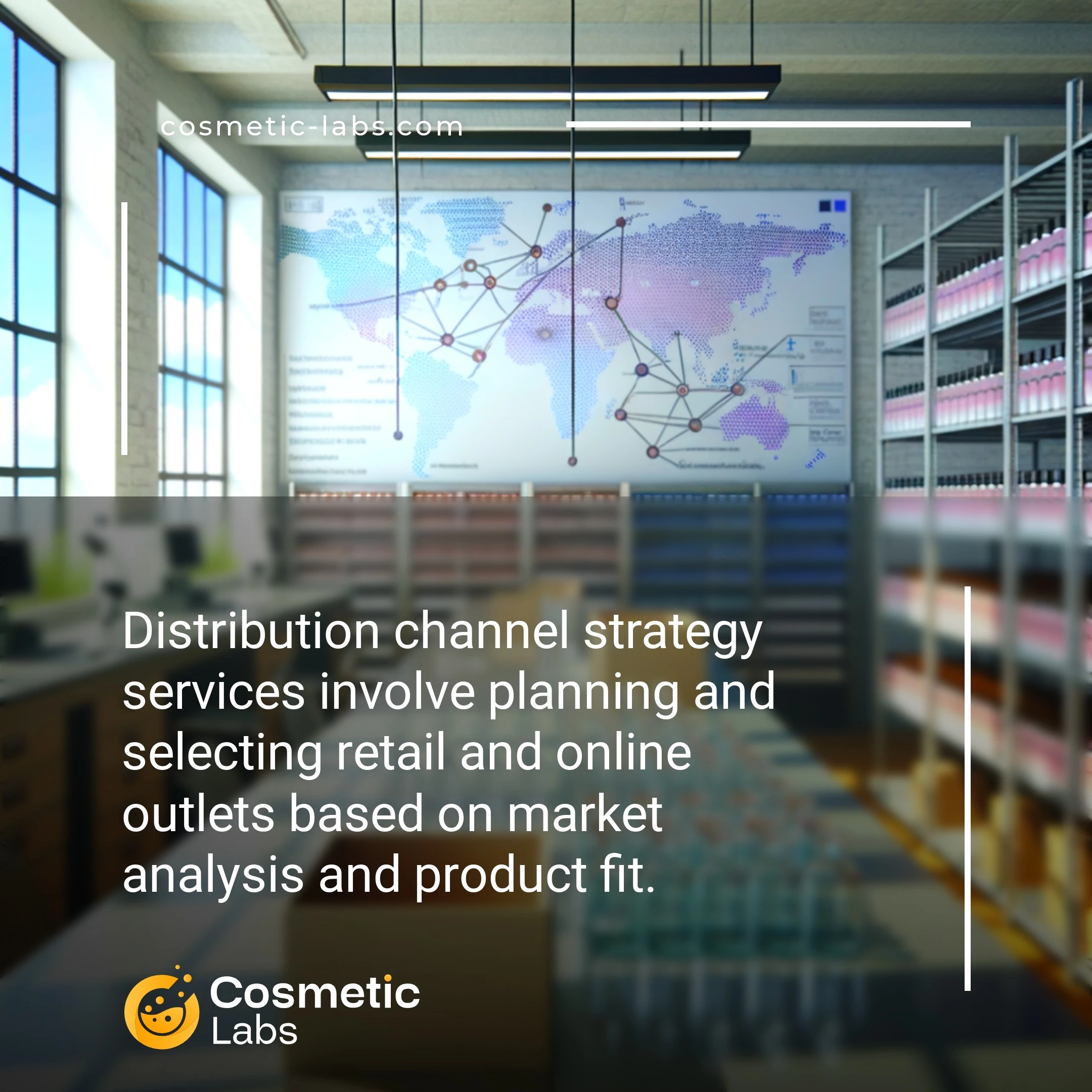Distribution Channel Strategy Services for Cosmetic Brand Growth

What is Distribution channel strategy?
Distribution channel strategy services help cosmetic brands identify and secure the right retail partners, from boutique stores to major chains and e-commerce platforms. Labs offering these services analyze your product positioning, target demographics, and pricing to match you with channels that fit your brand identity—whether that’s direct-to-consumer sales, specialty beauty retailers, or mass market placement. A lesser-known benefit: these experts often have existing relationships with buyers, reducing the typical 6-12 month timeline for securing shelf space.
Why do you need this service?
Cosmetic labs help brands launch products through retail placement strategies that identify whether your formulation fits better in Sephora, Target, or direct-to-consumer channels. They analyze your product’s price point, packaging requirements, and target demographics to map out distribution paths that maximize reach while maintaining profit margins of 40-60%.
Who provides Distribution channel strategy services?
All cosmetic labs providing Distribution channel strategy services
There is no company providing these services at the moment.
Distribution Channel Strategy Services
Getting your beauty products into the right retail spaces and online marketplaces requires more than just great formulations. Distribution channel strategy services help cosmetic brands identify and access the most profitable sales channels for their specific products and target demographics.
Retail Partnership Development
Labs offering distribution strategy services connect brands with established retail networks across different market segments. They analyze your product positioning and match it with appropriate retailers—from luxury department stores to mass-market chains.
Key retail channel services include:
- Buyer contact facilitation and introduction protocols
- Retail pricing structure optimization
- Shelf placement strategy and planogram development
- Regional market penetration planning
These partnerships often yield 40-60% faster market entry compared to independent outreach efforts.
E-commerce and Digital Distribution
Digital channels now account for over 35% of beauty product sales, making online distribution strategy a critical service component. Labs help brands establish presence across multiple digital platforms while maintaining brand consistency.
Digital distribution support covers:
- Amazon and marketplace optimization
- Direct-to-consumer website integration
- Social commerce platform setup
- International e-commerce expansion
Labs with distribution expertise typically maintain relationships with platform managers and understand each channel’s specific requirements, from product photography standards to fulfillment specifications.
Practical Applications of Distribution Channel Strategy Services
Distribution channel strategy services shape how cosmetic products reach retailers, e-commerce platforms, and ultimately consumers through carefully planned pathways.
Multi-Channel Retail Expansion
Labs help brands establish distribution channel strategies for beauty products across department stores, specialty retailers, and online marketplaces. They analyze retailer requirements, margin structures, and inventory turnover rates to match products with appropriate channels.
Teams map out phased rollouts starting with 5-10 test locations before expanding to 50+ stores. This approach reduces risk while gathering performance data on sell-through rates and customer demographics across different retail environments.
| Channel Type | Typical Margins | Lead Time | Minimum Orders |
|---|---|---|---|
| Department Stores | 55-65% | 90-120 days | $25,000-50,000 |
| Specialty Beauty | 50-60% | 60-90 days | $10,000-25,000 |
| E-commerce Direct | 70-80% | 30-45 days | No minimum |
| Subscription Boxes | 40-50% | 45-60 days | 500-1,000 units |
Direct-to-Consumer Integration
Cosmetic labs design hybrid distribution models that balance direct sales with retail partnerships. They implement inventory allocation systems that prevent channel conflicts while maintaining 15-20% stock reserves for direct fulfillment.
Labs configure automated reorder points based on sales velocity data from each channel. Brands typically see 30-40% higher margins through direct channels while retail partnerships provide 60-70% of total volume during the first year.
